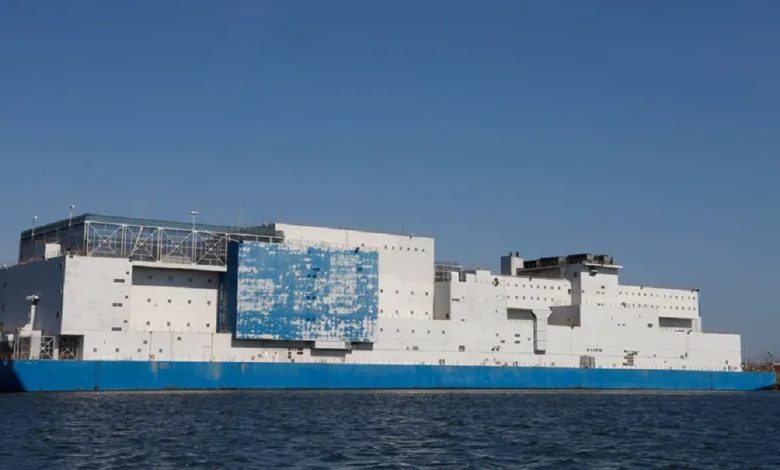New York Dismantles Controversial Floating Jail, Marking the End of an Era
The Vernon C. Bain Correctional Center, long condemned as a “modern slave ship,” is towed away after 33 years, paving the way for new waterfront development in the South Bronx.

New York City has turned a controversial page in its judicial history with the removal of the Vernon C. Bain Correctional Center—a massive floating jail that had been anchored off the South Bronx coast for over three decades. The facility, widely criticized by activists as a “modern slave ship,” is now gone, marking a major shift and opening the door to new maritime development.
On Monday morning, the 625-foot, five-story correctional barge was finally unmoored—a structure that had long stood as both an icon and a symbol of controversy. Crews used precision torches to cut the steel connections securing it to the dock, allowing tugboats to begin its final journey. The barge is now headed to Louisiana, where it will be dismantled and sold for scrap, bringing an end to its operational life.
Opened in 1992, the Vernon C. Bain Correctional Center was initially designed to ease overcrowding at Rikers Island. But from the start, it faced intense criticism. Built at a cost of $161 million, it quickly became notorious for its high expenses and grim conditions. Over 33 years, criminal justice and human rights organizations repeatedly condemned the facility for its treatment of detainees and its role in several tragic deaths.



Activists Applaud Removal of NYC’s Floating Jail as City Eyes Waterfront Renewal
Jovial O. Scott, executive director of the Bronx Defenders, voiced what many reform advocates felt, describing the jail as “a modern slave ship owned by the City of New York.” Scott emphasized the facility’s role in “holding tens of thousands of people who couldn’t afford bail—most of them Black and Brown men—for months or even years while awaiting trial.” She declared that its removal “truly closes a shameful chapter in our history,” highlighting the deeper issues it represented within the city’s justice system.
City officials from the Economic Development Corporation (EDC) confirmed that dismantling and selling the jail to southern metal plants will bring in about $1.5 million in scrap revenue. The barge’s journey to Louisiana will take over two weeks, first heading east through Long Island Sound due to weather conditions and heavy ship traffic on the East River.
Beyond its removal, the end of the floating jail paves the way for a new and promising future along the waterfront near the Fulton Fish Market Cooperative. City planners intend to transform the site into a modern maritime hub—part of New York’s “Blue Highways” initiative, which seeks to shift freight transportation from crowded streets to more sustainable water routes.

Officials Hail Floating Jail’s Removal as Step Toward Justice Reform in New York
Andrew Kimball, president of the EDC, expressed his excitement: “Today marks a new day for the Hunts Point Peninsula as we finally remove the Vernon C. Bain Correctional Center—a prison barge that overstayed its welcome on our city’s waterfront.” City Council member Rafael Salamanca Jr., who represents parts of the South Bronx including Hunts Point, celebrated the moment, saying, “A barge that symbolized neglect, suffering, and the city’s failure to deliver justice is now drifting into history. Let its removal be not just an ending—but the beginning of real change.”
The broader context of this removal ties into New York City’s ongoing efforts to reform its correctional system. While the Vernon C. Bain facility is gone, the city’s plan to close Rikers Island and replace it with smaller, community-based jails remains fraught with delays and rising construction costs. Originally approved in 2017, the project has fallen years behind schedule. Still, the removal of the floating jail stands as a tangible step toward reimagining justice and making better use of the city’s valuable waterfront.



